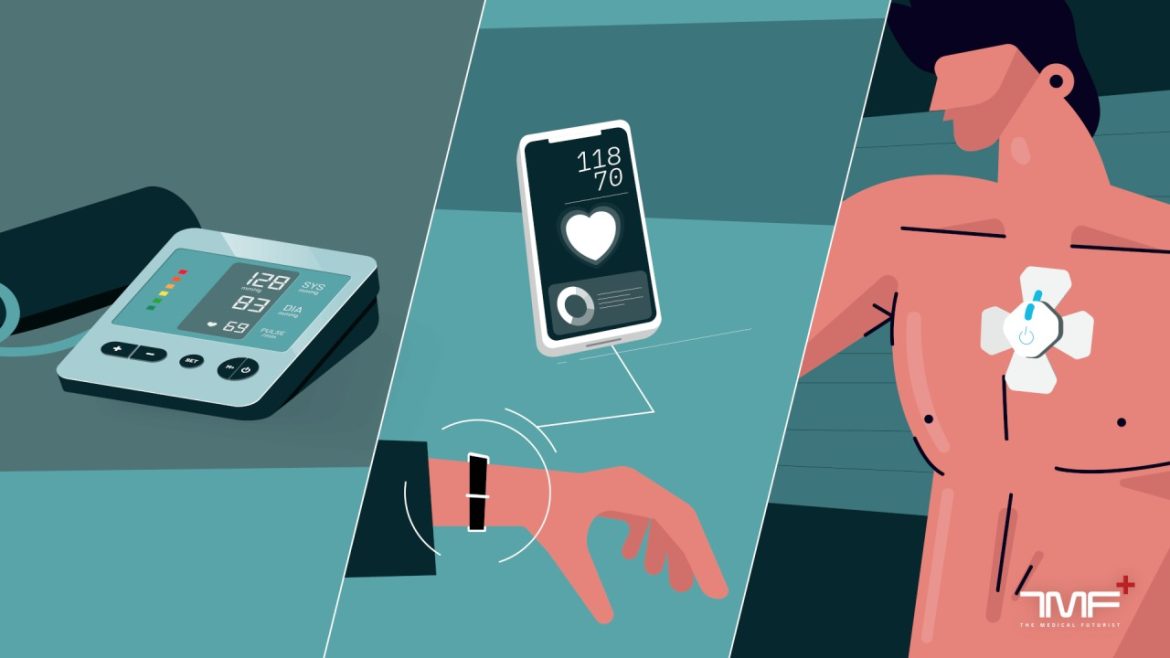In recent years, the field of wearable health technology has witnessed a remarkable evolution. These devices, once limited to simple pedometers and heart rate monitors, have transformed into sophisticated health tools that offer a wide range of capabilities. From tracking vital signs to monitoring chronic conditions and even detecting early signs of diseases, wearable health tech devices have become indispensable for individuals and healthcare professionals alike. In this article, we will explore the evolution of these devices and their impact on personal health management and the healthcare industry.
The Early Days: Basic Fitness Tracking
Pedometers and Heart Rate Monitors The initial wearable health tech devices focused primarily on fitness tracking. Pedometers, introduced in the early 20th century, counted steps to help users monitor their daily physical activity. Over time, these devices evolved to include heart rate monitors, which provided insights into exercise intensity and calorie expenditure.
Limited Data and Connectivity Early devices lacked advanced sensors and connectivity features. Users had to manually record and analyze data, which made it challenging to gain comprehensive insights into their health and fitness.
Smartwatches: A Game-Changer
Convergence of Technology The introduction of smartwatches marked a significant turning point in wearable health tech. Smartwatches combined the functionality of fitness trackers with the capabilities of smartphones, offering a seamless and integrated experience. Users could track their steps, heart rate, and sleep patterns while receiving notifications and accessing apps.
Advanced Health Sensors Modern smartwatches are equipped with a plethora of sensors, including optical heart rate sensors, accelerometers, and GPS. These sensors enable more accurate and real-time tracking of various health metrics, such as heart rate variability, sleep stages, and even blood oxygen levels.
Health and Fitness Ecosystems Smartwatches are typically part of larger health and fitness ecosystems, often paired with mobile apps and cloud-based platforms. These ecosystems allow users to store, analyze, and share their health data, fostering a more comprehensive approach to personal health management.
Disease Management and Remote Monitoring
Chronic Condition Management Wearable health tech has expanded beyond fitness tracking to chronic disease management. Devices like continuous glucose monitors (CGMs) have revolutionized the management of conditions such as diabetes. CGMs provide real-time glucose data and alerts, empowering individuals to make timely decisions about their treatment.
Remote Patient Monitoring Healthcare professionals are increasingly using wearable devices for remote patient monitoring. Patients with chronic diseases can transmit vital signs and health data to their healthcare providers in real-time. This enables timely interventions and reduces the need for frequent in-person visits.
Early Detection and Prevention
Early Warning Systems Some wearable devices are designed to detect early signs of diseases and health issues. For example, smartwatches equipped with electrocardiogram (ECG) capabilities can identify irregular heart rhythms, potentially indicating conditions like atrial fibrillation. Early detection allows for timely medical intervention and may save lives.
Sleep and Stress Tracking Wearable health tech devices now offer advanced sleep tracking and stress management features. By monitoring sleep patterns and stress levels, these devices can help individuals identify and address potential health concerns, such as sleep apnea or chronic stress, before they escalate.
The Future of Wearable Health Tech
AI and Machine Learning The future of wearable health tech is closely tied to advancements in AI and machine learning. These technologies can analyze vast amounts of health data to provide personalized insights and predictions. For example, AI-driven algorithms can identify trends in a user’s health data and provide recommendations for lifestyle modifications or medical consultations.
Integration with Healthcare Systems Wearable health tech is becoming increasingly integrated into healthcare systems. Healthcare providers can access and analyze patient data from wearable devices, streamlining diagnosis and treatment planning. This integration holds the potential to reduce healthcare costs and improve patient outcomes.
Innovation in Form Factors In addition to smartwatches, wearable health tech is diversifying in terms of form factors. From smart clothing with embedded sensors to discreet health patches and even smart glasses, innovation in form factors allows for more unobtrusive and specialized health monitoring.
Conclusion
The evolution of wearable health tech devices has been nothing short of remarkable. From basic fitness trackers to comprehensive health ecosystems, these devices have empowered individuals to take control of their health and well-being. Moreover, they have provided healthcare professionals with valuable tools for disease management, early detection, and remote patient monitoring. As technology continues to advance, the future of wearable health tech holds the promise of even more personalized, integrated, and effective solutions that will revolutionize healthcare and personal health management.

